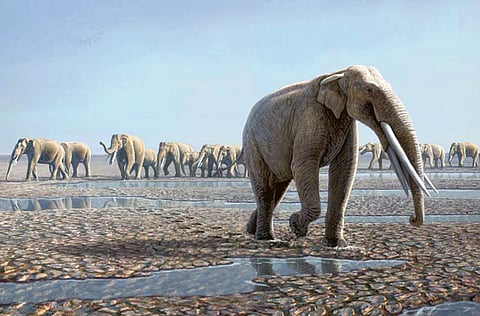When Mammoth elephants walked freely in Abu Dhabi
Herds of elephants roamed in Abu Dhabi about seven million years ago, a recent study shows

Abu Dhabi: Herds of elephants weighing up to five tonnes freely roamed in Abu Dhabi about seven million years ago, a recent archaeological study shows.
The study, published in the World Journal for Biological Research on Wednesday, revealed the existence of footprints in the Arabian desert. It's the oldest known proof of the way modern-day elephants' ancestors interacted in the environment, reported WAM.
A team of archaeologists from the UAE, the US, France, and Germany worked on the site and prepared the study which revealed visually stunning trackways in Mlesa 1 area in Baynouna, in Abu Dhabi's Western Region.
Excited about the discovery, the scientists described the five-hectare area as a "fossilised behaviour" and a "beautiful line of evolution" towards the present-day elephants. The study also shows that a river used to run through what is now dry desert and grasslands.
Prehistoric tracks
Extending over 260 metres, the site has one of the world's biggest isolated elephant herd tracks. It is also the longest connected prehistoric elephant passage discovered till now. Scientists believe the tracks were made by a herd of no less than 13 mostly female elephants, including a calf, that walked during the late Miocene period on mud which had hardened and buried in sand.
Erosion has revealed the footprints. Analysis of the longest footsteps of the herd also indicated the social structure of the animals in pre-historic era in a way that cannot be revealed through their bones or teeth, they said.
Some six to eight million years ago, scientists believe the Baynouna area was home to a whole range of animals including sabre-tooth tigers, predecessors of hippopotami, antelopes, giraffes, monkeys and ostriches.
Sign up for the Daily Briefing
Get the latest news and updates straight to your inbox

